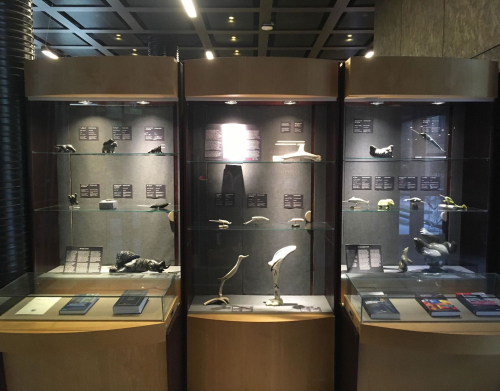Prior to contact with Qallunaat (non-Inuit peoples), Inuit carving was primarily a method of producing tools, toys, and ritual items. After contact with European explorers, Inuit carving practices expanded to include items for trade. Artistic production continued to develop; by 1949, the modern Inuit art industry had been established. While the shift to commercial art production may have been a positive outcome of colonial contact, the many harmful consequences on the culture and way of life of indigenous populations, including the Inuit, cannot be ignored nor forgotten. The Inuit sculptures presented in this display, ranging in dates between the mid-twentieth and the early twenty-first centuries, demonstrate the close relationship between Inuit peoples and the Arctic. Sustainability and the efficient use of materials, two core Inuit principles, have been paramount to the survival of Inuit peoples for millennia. Many of these sculptures and objects were created using antler, a material shed on a yearly basis, or animal bone. Other sculptures are made from stone quarried in the region, such as soapstone (steatite) or serpentine. In this way, these works not only demonstrate the deep respect that the Inuit have for their environment but also reveal the diversity and scope of Inuit art production.
